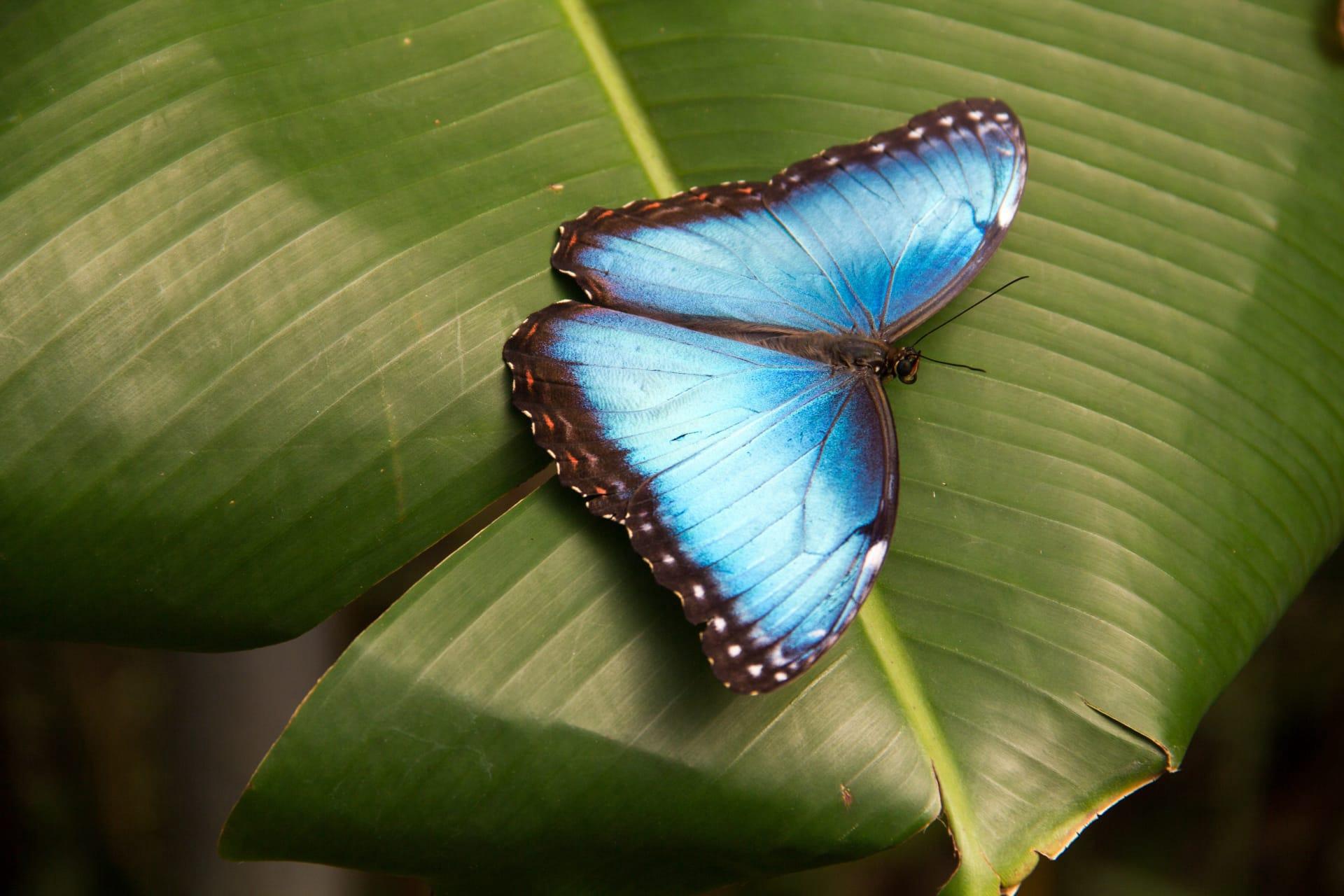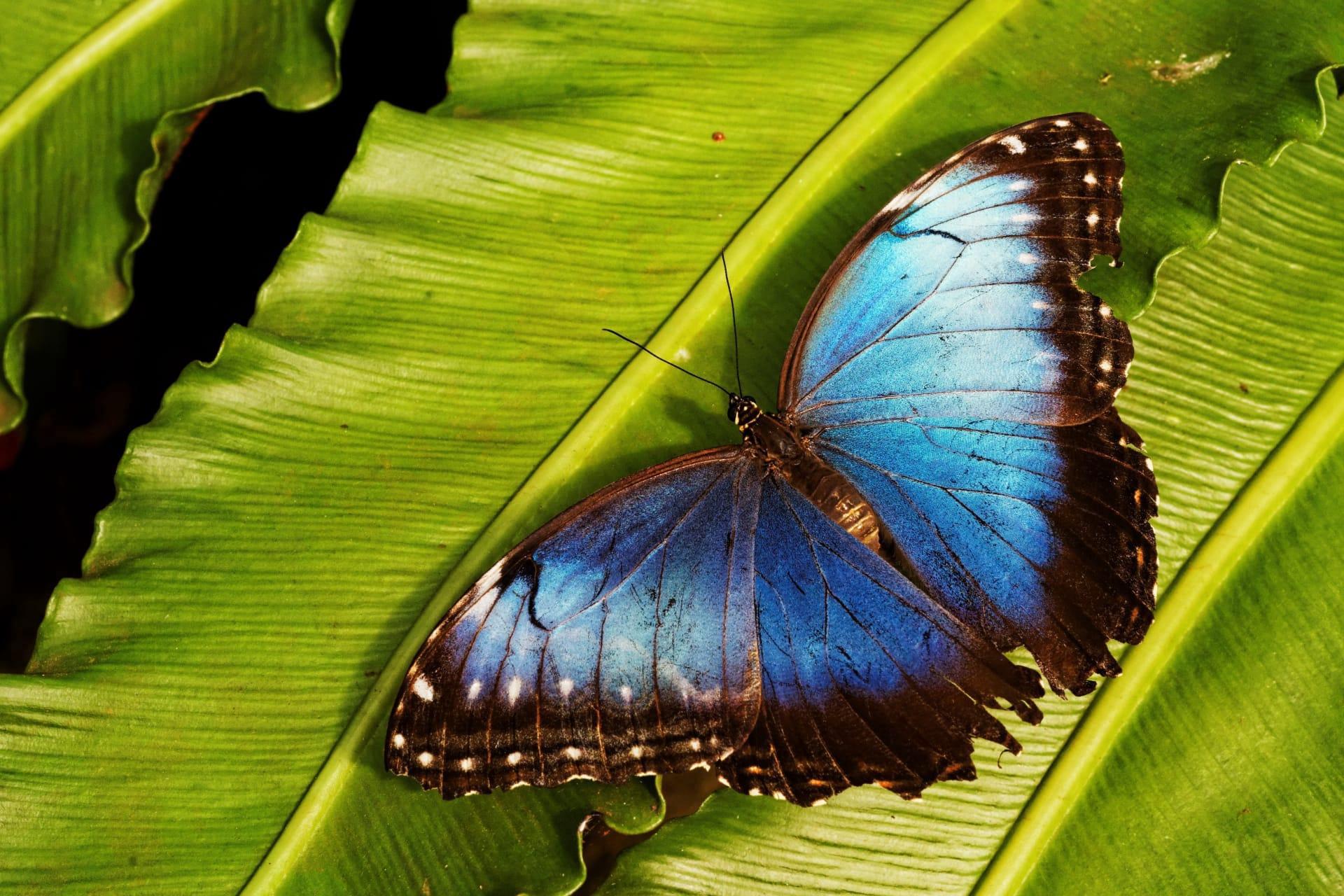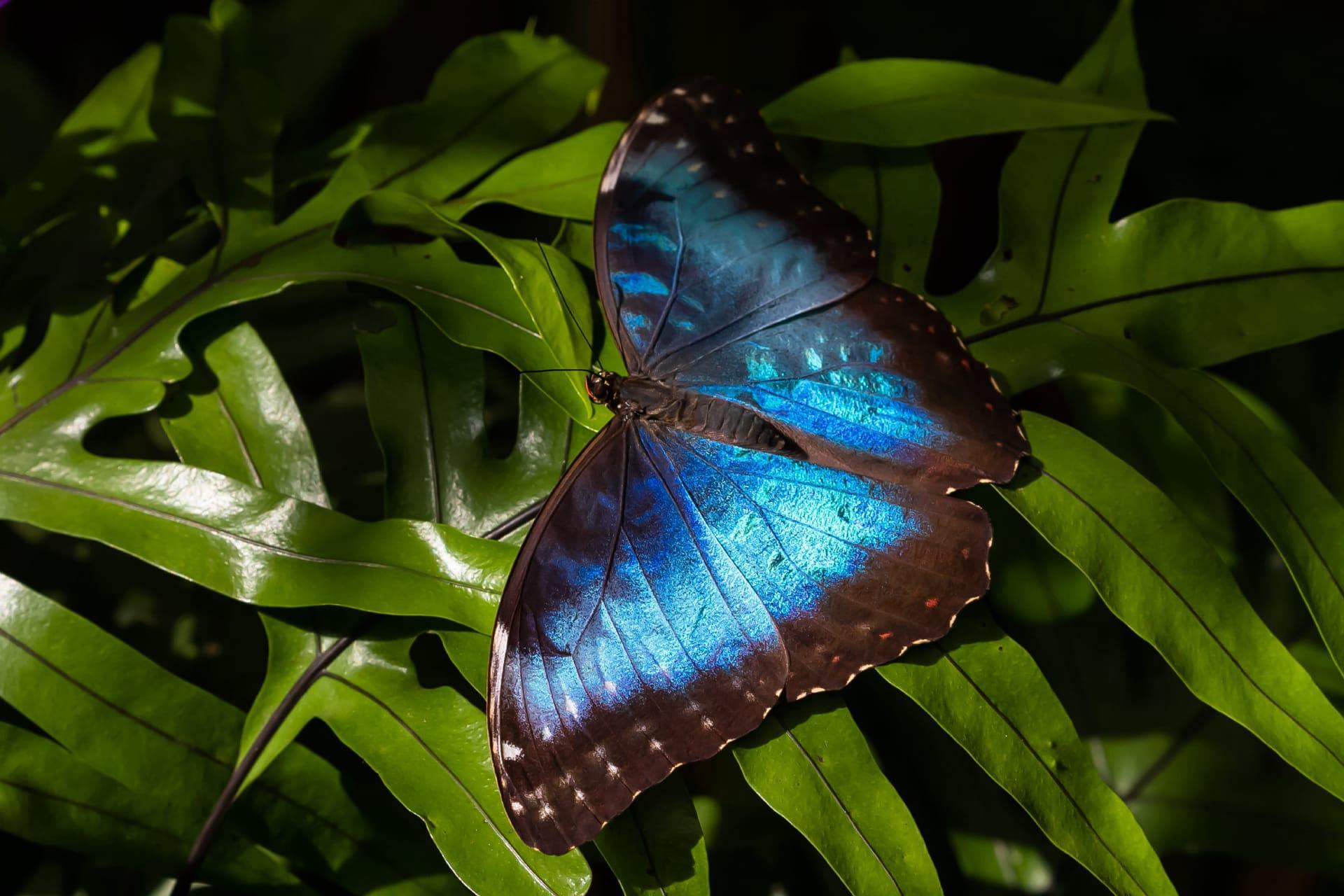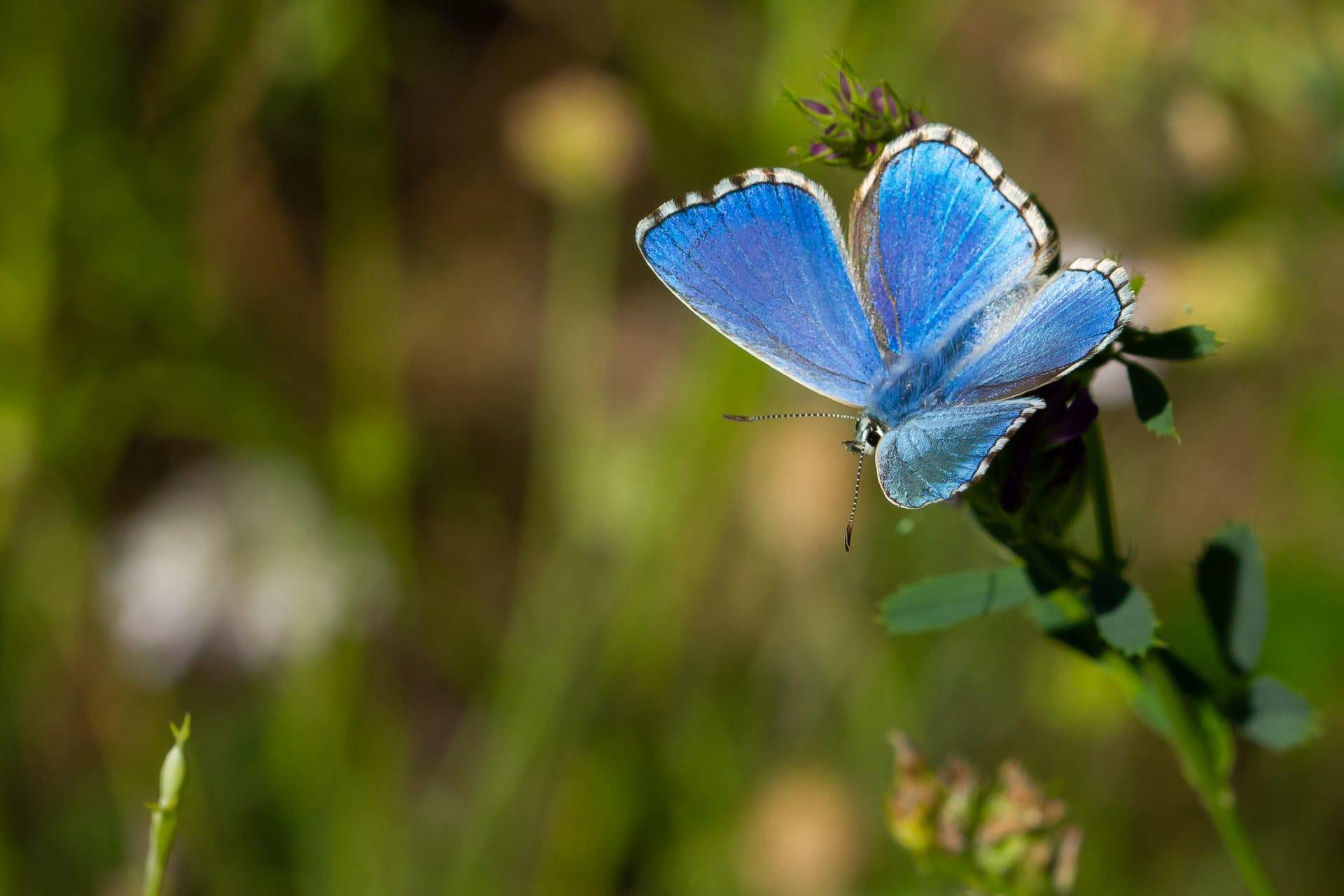1
Did you know that the blue butterfly, a marvel of nature, isn't always blue? That's right! The striking blue color of many blue butterflies, such as the common blue (Polyommatus icarus), isn't a result of pigment. Instead, it comes from the microscopic structures on their wings that reflect light, creating what's known as structural coloration. This means their vibrant hue can appear differently depending on the angle and quality of light. Fascinatingly, the underside of their wings are usually a duller color, which helps in camouflage against predators.
In the world of blue butterflies, size can be deceptive. Take the Large Blue (Phengaris arion), for example. Despite its name, it's not particularly large, with a wingspan only reaching about 1.5 to 1.7 inches (38 to 43 millimeters). What's more intriguing is its complex life cycle, involving a unique form of parasitism. After hatching, the Large Blue caterpillar is initially a plant eater. But soon, it drops to the ground and secretes a sweet substance, attracting red ants. The ants, mistaking the caterpillar for one of their own, carry it into their nest. There, the caterpillar feeds on ant larvae until it pupates, continuing this deceptive survival strategy.

2
Now, let's delve into the world of blue butterfly migration. Among these, the Blue Morpho (Morpho peleides) stands out. Native to Central and South America, these butterflies are known for their incredible migratory journeys. They travel hundreds of miles in search of optimal habitats and food sources. During migration, they form large groups, creating a breathtaking spectacle with their iridescent wings shimmering in the sunlight. The Blue Morpho's wingspan, reaching up to 8 inches (20 centimeters), makes it one of the largest butterflies in the world, adding to the visual grandeur of their migration.
Another surprising fact about blue butterflies is their diet. While we often associate butterflies with nectar, many blue butterfly species, including the Blue Morpho, have quite unusual dietary habits. They prefer to feed on fermenting fruits, tree sap, and even decaying animal matter. This diverse diet plays a crucial role in their survival, especially in tropical rainforests where these resources are more readily available than flower nectar. The fermentation process in fruits actually aids in their digestion, making it easier for them to extract vital nutrients.

3
Blue butterflies, like the Blue Clipper (Parthenos sylvia), have a fascinating defense mechanism against predators. Their vibrant blue wings, which are a signal of poison in nature, act as a deterrent. However, not all blue butterflies are poisonous; some mimic the appearance of toxic species to protect themselves. This form of mimicry, known as Batesian mimicry, is a clever survival strategy where harmless species evolve to look like harmful ones to avoid predation. The Blue Clipper, though not poisonous itself, benefits from this association with toxicity.
Another intriguing aspect is their mating behavior. Many blue butterflies exhibit unique courtship rituals. For example, the males of some species, like the Adonis Blue (Lysandra bellargus), engage in a dazzling display of aerial acrobatics to impress potential mates. These displays involve rapid flying, spiraling upwards, and then suddenly dropping down, showing off their vivid blue wings. Such elaborate courtship behaviors are not just about physical prowess; they also demonstrate the male's health and genetic fitness to the female, playing a crucial role in the selection of mates.

4
Did you know that the lifecycle of blue butterflies can be quite intricate? The Karner Blue (Lycaeides melissa samuelis), found in North America, presents a perfect example. Its survival is closely linked to the wild lupine plant. The female Karner Blue lays her eggs exclusively on wild lupine, which the caterpillars feed on after hatching. This dependence creates a unique ecological relationship, as the survival of the Karner Blue is directly tied to the availability of this specific plant species.
When it comes to habitat, blue butterflies are remarkably diverse in their preferences. Some species, like the Mountain Blue (Polyommatus dorylas), thrive in high-altitude environments, often found above 2,000 meters (6,562 feet). These butterflies have adapted to colder temperatures and less oxygen, showcasing the incredible versatility and resilience of the species. Their presence in such challenging environments underscores the adaptability of blue butterflies to various ecological niches.

5
Blue butterflies also play a significant role in ecosystem health. For instance, by feeding on nectar, they help in the pollination of various plants. However, their contribution extends beyond pollination. Their larvae, especially those of species like the Common Blue, often feed on leguminous plants, which are crucial in fixing nitrogen in the soil. This feeding habit indirectly aids in soil fertility, demonstrating the interconnectedness of species within an ecosystem.
The coloration of blue butterflies is not just for show; it has practical applications. In some species, the blue hue helps in thermoregulation. The reflective properties of their wings can be used to absorb or reflect heat, aiding these butterflies in maintaining an optimal body temperature. This is particularly useful in fluctuating environmental conditions, where temperature regulation is essential for survival.